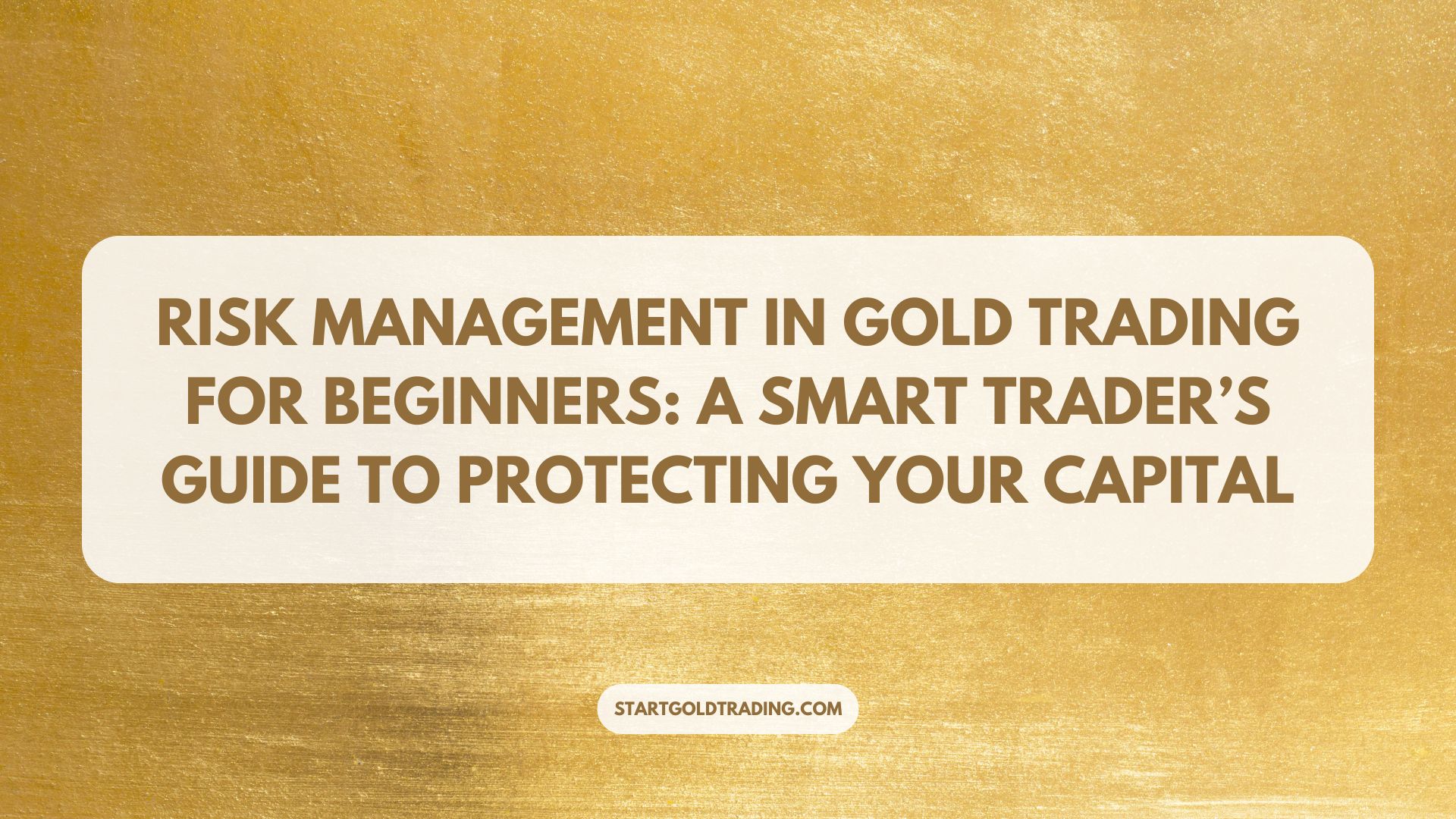Thinking about diving into gold trading? You’re not alone—gold has long been a favorite for traders seeking opportunity and stability. But here’s the catch: without proper risk management, even the best gold trading strategies can fall apart.
In this guide, we’ll explore risk management in gold trading for beginners, giving you practical tools to protect your capital, avoid emotional pitfalls, and build a sustainable trading approach.
Why Risk Management in Gold Trading for Beginners Is Crucial
Risk management isn’t just about protecting money—it’s about protecting your confidence, your trading longevity, and your ability to keep showing up in the market.
Here’s why it’s essential for beginners:
- Gold is volatile: News events, interest rates, and currency swings can send gold moving fast.
- Beginners often risk too much: New traders frequently overleverage or trade without stop-losses.
- Losses are part of the game: But without risk controls, one bad trade can wipe you out.
- It builds discipline: Risk management turns gambling into strategy.
Think of it this way: trading without risk management is like driving without brakes.
What Is Risk Management in Gold Trading?
Risk management in gold trading for beginners refers to the set of strategies, rules, and tools that help traders:
- Limit potential losses
- Protect profits
- Make consistent, rational decisions
- Stay in the game long enough to learn and grow
It includes things like setting stop-loss orders, managing position sizes, and having a clear trading plan.
Core Principles of Risk Management in Gold Trading
Here are the essential pillars every beginner should understand:
1. Never Risk More Than You Can Afford to Lose
This may sound obvious, but many new traders violate this rule when emotions take over.
- Limit risk to 1–2% of your account per trade.
- If you’re trading a $1,000 account, don’t risk more than $10–$20 on any one position.
- This protects you from major drawdowns and keeps you trading longer.
2. Use Stop-Loss Orders—Always
A stop-loss automatically closes your trade when the price moves against you by a certain amount.
- Set it before you enter the trade—not after.
- Place it at a logical technical level (e.g., below support or above resistance).
- Avoid “mental stops”—they don’t work under pressure.
3. Plan for Risk-Reward Ratios
Before entering a trade, ask: “Is this worth it?”
- Aim for a minimum risk-reward ratio of 1:2.
- That means if you risk $50, your potential reward should be $100.
- This way, even if you win only 50% of trades, you’re still profitable.
4. Manage Leverage Carefully
Leverage can amplify your gains—but also your losses.
- As a beginner, use low leverage (1:5 or lower) until you fully understand the risk.
- Don’t get tempted by platforms offering 1:100 or more.
- Test leverage strategies in a demo account before going live.
5. Avoid Trading During Unpredictable News
While some traders love volatility, beginners are often better off sitting out during:
- Federal Reserve interest rate decisions
- U.S. Non-Farm Payrolls (NFP) releases
- Unexpected geopolitical shocks
Unless you have a news-specific strategy, wait for the dust to settle before entering.
Practical Risk Management Tools for Gold Traders
Here are some tools and practices to support risk management in gold trading for beginners:
- ✅ Position size calculator: Helps you calculate the ideal lot size based on account size and risk.
- ✅ Trading journal: Log each trade to identify patterns and improve decision-making.
- ✅ Economic calendar: Stay aware of upcoming events that can shake the gold market.
- ✅ Alerts and notifications: Let your platform warn you when price nears critical levels.
- ✅ Demo account: Practice without risk before going live.
Common Risk Management Mistakes to Avoid
Even with a good plan, beginners often stumble by:
- ❌ Moving stop-losses: Hoping the trade will reverse instead of cutting the loss.
- ❌ Overtrading: Taking too many trades without high-quality setups.
- ❌ Averaging down: Adding to a losing position hoping to break even.
- ❌ Trading without a plan: Reacting to the market instead of following rules.
Avoiding these traps is half the battle.
Example: Applying Risk Management in a Real Gold Trade
Let’s say you have a $2,000 trading account and you want to buy gold (XAU/USD) at $2,300.
- You identify support at $2,290 and resistance at $2,330.
- You place a stop-loss at $2,290 (risking $10/ounce).
- You aim to take profit at $2,330 (reward = $30).
- Your risk-to-reward is 1:3—a solid setup.
If you risk 1% of your account ($20), you’d buy a position size where $10 movement = $20 loss.
This is calculated, controlled trading—not gambling.
Expert Tips on Risk Management in Gold Trading for Beginners
- 📌 Pre-plan every trade: Know your entry, stop, and target before you click “buy.”
- 🧠 Detach from single trades: One loss means nothing in a well-managed system.
- 📉 Use lower timeframes for precision, but make sure your setup aligns with the larger trend.
- 💬 Review weekly: Use Sunday evenings to evaluate what went right and wrong.
- 📊 Backtest your strategy: Make sure it works historically before risking capital.
Frequently Asked Questions (FAQs)
Q: How much should I risk per trade as a beginner?
Start with 1% of your total account balance per trade. This allows you to survive multiple losses.
Q: Is leverage dangerous in gold trading?
It can be—especially in volatile markets. Use it wisely and sparingly until you’re more experienced.
Q: What if I lose multiple trades in a row?
Take a break. Review your trades. Cut your position size until confidence and performance return.
Q: Should I use trailing stop-losses?
Yes, once in profit. They help lock in gains while allowing your trade to run further.
Q: Can I manage risk on mobile platforms?
Yes—just be extra careful with order entries and stop-loss settings on small screens.
Conclusion
Risk management in gold trading for beginners isn’t just a safety net—it’s the foundation of every smart trade you’ll ever make. While gold offers strong opportunities, its volatility can quickly punish overconfidence and poor planning.
By following these risk management principles—like using stop-losses, keeping your position size reasonable, and avoiding revenge trades—you’re setting yourself up for long-term success, not short-term thrills.

